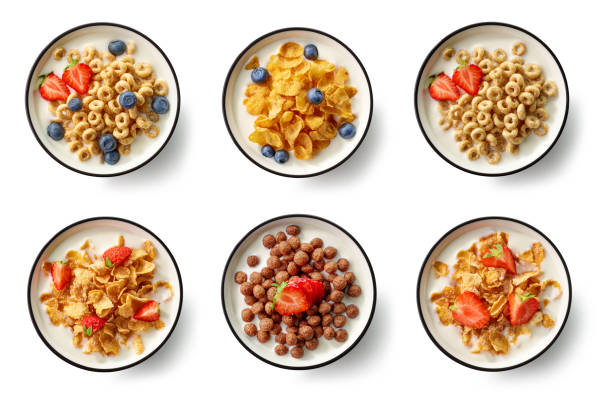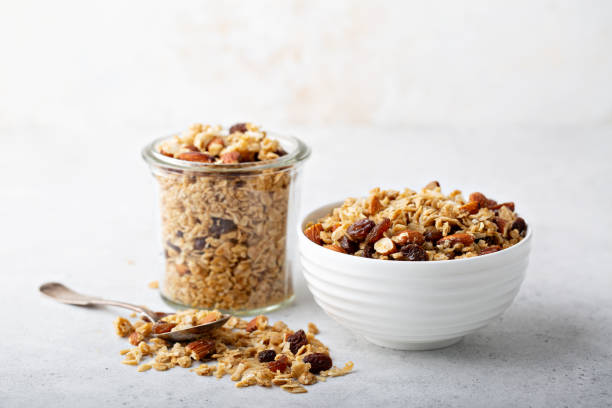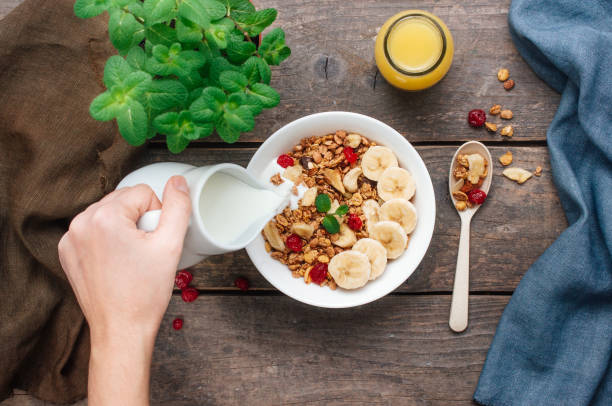What to Eat and Drink
How To Make Cereal More Filling
For good reason, breakfast is generally referred to be the most essential meal of the day. It jump-starts your metabolism, supplies important nutrients, and establishes the tone for your energy levels throughout the day. However, not all breakfasts are equal in terms of keeping you full and content until your next meal. This is especially true for cereal, which might leave you hungry shortly after eating. So, how can you make your cereal more filling? Let’s look at the concept of satiety and some strategies for increasing the satisfaction factor of your morning bowl.
Understanding the Concept of Satiety
Satiety is the sensation of fullness and contentment that humans get after eating. It is the sensation that tells us when we’ve had enough and can aid in the prevention of overeating. Satiety is affected by a number of factors, including the nutrient composition of a meal, the amount of food taken, and the time it takes our bodies to digest and assimilate the food. Understanding these aspects allows us to make informed decisions about how to make our cereal more filling.

Factors That Contribute to a Filling Cereal
There are a few crucial aspects to consider while making your cereal more full. The first consideration is the sort of cereal you select. Choosing whole-grain cereals with fiber and less added sugar will help induce satiety. Whole-grain cereals have more nutrients, including fiber, which takes longer to digest and helps you feel fuller for longer. Cereals high in added sugars, on the other hand, can cause energy dumps and make you feel hungry sooner.
In addition to the type of cereal, you can improve its filling properties by adding protein. Protein has been shown to increase satiety and keep you filled for longer. Adding nuts, seeds, or nut butter to your cereal can give a decent dose of protein as well as healthy fats, which can help you feel full.
Increase the fiber content of your cereal to increase its filling factor. Fiber-rich products such as bran flakes, whole grains, or chia seeds can aid digestion and produce a feeling of fullness. Fiber absorbs water and expands in your stomach, causing you to feel full. It also slows down the digestion process, which might help you feel fuller for longer.
Choosing the Right Type of Cereal
It is critical to examine the nutritional profile while selecting a cereal that will keep you feeling full. Look for cereals with a high fiber content that are created using whole grains. When compared to processed grains, which have been stripped of their bran and germ, whole grains deliver more nutrients and fiber. Look for whole grains as the first component on the label, such as whole wheat, oats, or brown rice.
Aside from whole grains, consider the amount of added sugars in your cereal. Many cereals on the market are high in sugar, which can produce blood sugar spikes and energy collapses. Choose cereals with fewer added sugars, or go unsweetened and add your own natural sweeteners, such as fresh fruit or honey, if desired.
Incorporating Protein into Your Cereal
Protein in your cereal can help you stay full and content until your next meal. Protein can be added to cereal in a variety of ways. A handful of nuts or seeds on top of your cereal is a simple alternative. Almonds, walnuts, pumpkin seeds, and chia seeds are all good options. These additives not only offer a crunchy texture and flavor, but they also give a wonderful source of protein and healthy fats.
You may also add a spoonful of nut butter to your cereal for a creamier texture. Peanut butter, almond butter, and cashew butter are all wonderful protein-boosting options for breakfast. Just keep in mind that nut butters are high in calories. Depending on your calorie needs and preferences, aim for a tablespoon or two.

Adding Healthy Fats for Satiety
Healthy fats, in addition to protein, are a vital component in making your cereal more filling. Healthy fats not only provide satiety but also enhance flavor and texture. Avocado, for example, is a nutrient-dense fruit high in monounsaturated fats, which are good for the heart. Adding half an avocado to your cereal can provide creaminess and richness while also increasing the satisfaction factor.
Alternatively, you can top your cereal with flaxseeds or hemp seeds for an extra dose of beneficial fats. These tiny seeds are high in omega-3 fatty acids, which have been linked to improved heart health and inflammation reduction. They also offer a nice crunch to your cereal, making it more delightful to eat.
Including Fiber-Rich Ingredients
Fiber is essential for making your cereal more full. As previously said, fiber absorbs water and expands in your stomach, giving you a feeling of fullness. It also slows digestion, which helps to prolong energy release and minimizes rapid spikes and crashes. Fiber-rich elements can assist improve the filling aspects of your cereal.
Choosing bran flakes or whole-grain cereals is a simple way to add fiber to your breakfast. Bran flakes are formed from the grain’s outer layer, which is high in fiber and minerals. Whole-grain cereals, such as whole wheat flakes or oats, are also high in fiber. You can combine these cereals with your favorite brands or eat them alone.
Chia seeds are another high-fiber source that may be put on top of your porridge. These small seeds absorb liquid and gel up, making you feel satisfied for longer. They are also high in omega-3 fatty acids, making them a healthy complement to your morning.
Using Portion Control to Enhance Fullness
While adding protein, healthy fats, and fiber to your cereal will help it fill you up, portion control is also crucial to consider. Even if your cereal contains healthful nutrients, eating too much of it can result in an excess of calories. The goal is to strike the correct balance between satisfying your hunger and going crazy.
Begin by measuring out a serving of cereal according the package directions. This can help you keep track of how much you’re eating and prevent mindless overeating. You can also create the idea of a larger portion by using a smaller dish or plate. According to research, humans view smaller dishes as more substantial, which can assist induce feelings of fullness.
Be cautious of the amount of milk or drink you add to your cereal in addition to portion control. Liquid can add volume to your cereal without adding many calories, which can help you feel full. However, don’t drown your cereal in milk, as too much liquid might make it soggy and unpleasant to chew.

Creative and Filling Cereal Topping Ideas
Get inventive with your toppings to take your cereal to the next level of fillingness. There are numerous ways to flavor, texture, and nutrient-dense your breakfast bowl. Here are a few ideas to get you started:
- Fresh fruit: Adding fresh fruit to your cereal not only adds sweetness but also vitamins, minerals, and fiber. For a burst of flavor, try sliced bananas, berries, diced apples, or slices of mango.
- Dried fruits: Such as raisins, cranberries, or apricots, can give your cereal a chewy texture and natural sweetness. Just be aware of portion quantities, as dried fruits are higher in sugar and calories than fresh fruits.
- Yogurt: Instead of milk, try a spoonful of yogurt on top of your cereal. Yogurt contains protein, calcium, and probiotics, all of which can help with intestinal health. If you have dietary limitations, choose Greek yogurt for an added protein boost or dairy-free options.
- Spices: Don’t be hesitant to add some fragrant flavors to your cereal. For a warm and fuzzy sensation, sprinkle a little of cinnamon, nutmeg, or cardamom on top of your cereal. These spices can also assist to normalize blood sugar levels and provide antioxidants.
- Dark chocolate: If you enjoy chocolate, try mixing in a few pieces of dark chocolate to your cereal. Dark chocolate is high in antioxidants and can satisfy your sweet taste without adding too much sugar.
- Coconut flakes: Toasted coconut flakes can add a crispy texture and tropical taste to your cereal. They also have good fats, fiber, and minerals, making them a healthy complement to your breakfast.
Conclusion
The incorporation of these suggestions and methods into my morning routine has the potential to transform my cereal into something that is more satiating and filling. I am able to increase the satiety component of my morning bowl by selecting the appropriate kind of cereal, containing elements that are high in fiber, including protein and healthy fats, and practicing portion control. I’m going to get adventurous with my toppings and enjoy a breakfast that is both nourishing and satiating to begin my day. At this point, it is time to bid farewell to those hunger feelings that strike in the middle of the morning and to welcome a breakfast that will keep me nourished and satisfied until the next meal.


